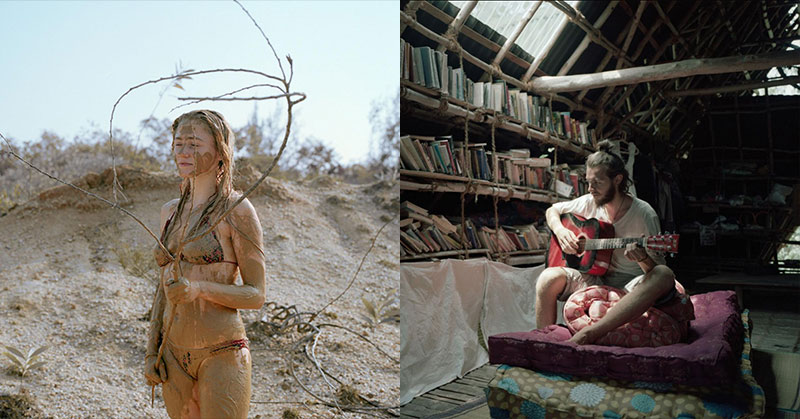A place once covered with trees, the Tamil Nadu had become a dry, barren desert over the course of the 18th to 20th centuries. European colonists had all come in an attempt to build cities, effectively destroying the natural ecosystem of the land. Now, a large section of that land in South India, known as Auroville, has been restored. This is all thanks to a group of people living offline and off the grid with the purpose of returning the area to its natural state. (1)
The History of Auroville
Sometime in the 1960s, an Israeli man named Aviram came to Tamil Nadu with only one purpose: to reforest the land and bring it back to its former beauty. He called his area Auroville. In 2003, a smaller community in the region was established, now known as the Sadhana Forest. The colony has about 100 people living in it now. Since 2015, more than 30,000 trees have been planted there thanks to the community and volunteers from all over the world. (1, 2)
Offline, Off-Grid
The community thrives living entirely off the land on which they live. Many of them have come to the Sadhana Forest to reset their own lives. They come because they need to reconnect with nature. They do so by helping to restore it. (1, 2)
Sustainable infrastructure is of the utmost importance in Sadhana. The entire colony runs on solar power. When solar energy is low, they have stationary bikes they can use to power small items such as blenders. They use dry composting toilets and a greywater system. Both of these repurpose waste and runoff and return valuable nutrients to the soil. (1, 2)
Their homes are built entirely out of materials from the forest: Palm leaves, timber, and coconut rope – never nails. They all eat an entirely vegan diet and grow their own food.
Together, the community eats, cooks, cleans, and of course, plants trees. (1, 2)
An example for the world
Auroville and the Sadhana Forest are showing others that in a time of climate change and uncertainty, there is a need for alternative lifestyles. At the very least, there is a need for everyone to modify the way that they live. (1, 2)
The Sadhana Forest is an example of how with hard work and dedication, we can return the land to its natural state and revitalize the planet. The forest now has two sister communities in Haiti and Kenya, all working to the same goal in their specific regions. (1, 2)
A community first
Auroville and Sadhana Forest communities are largely populated by people from around the world. Not only have they come together to support each other, but they also are well connected with the villages around them. Children from the surrounding villages visit the project frequently, with more than 200 children visiting and caring for the trees they personally have planted every week. (2)
The region is always open to visitors and has hosted over 7000 volunteers, students, and interns from India and around the globe for as little as two weeks up to three years. Accommodation is always free, and visitors participate in the daily activities of the community.
They also host several workshops and festivals all centered around sustainability and environmental education. (2)
The Daily Schedule
The community members and all visiting volunteers follow the same schedule every day:
- 5:30 am Wake up call
- 6:00 am Morning circle (dividing sevas for first session)
- 6:15 am-8:30 am First seva (first session of activities)
- 8:30 am-9:30 am Breakfast
- 9:30 am-12:15 pm Second seva (second session of activities)
- 12:30 pm Lunch
After lunch is free time, however, you are still responsible for whatever tasks you have been assigned to that day, whether it is cooking the evening meal or turning the solar panels. (2)
Children’s Land
The Sadhana community established this small plot of land in 2009 to encourage finding creative solutions to sustainability. It is run primarily by children, but locals and community members can all join in. (2)
Haiti and Kenya
Sadhana India’s sister communities are also doing incredible things in their own regions. Both of these areas’ main goal is to provide food to the impoverished communities around them and help those villages and areas become more self-sustaining. They are training locals in agroforestry and water conservation, providing food-bearing trees to poverty-stricken communities, and helping them to establish long-term solutions to the problems they face each day. (2)
Real, sustainable voluntourism
Auroville and the Sadhana forest are doing incredible things for the communities in which they live. It is open to visitors for both shorter and longer-term visits, and accommodations are always free. Reservations are not required, but if you have questions or want to let them know you are coming to volunteer you can contact them off of their website. (1, 2)
If you are not sure you are ready to commit to volunteering there but want a closer look into the community and what it is like there, you can take a tour of the community and take part in a free vegan dinner every Friday at 4:30. There is a free bus service to and from the kitchen. (3)
If you are at all interested in using your next travel block to make the world a better place, then this is a place you should consider visiting.
Read More:
Living Off-Grid for Almost 80 Years
Israeli tech company making water from air gets top honor in Las Vegas
10 Perfect Places In North America To Live Off The Grid

